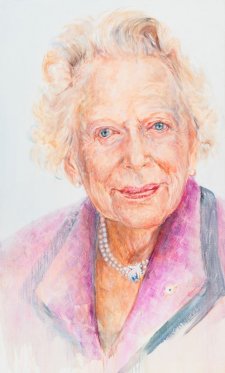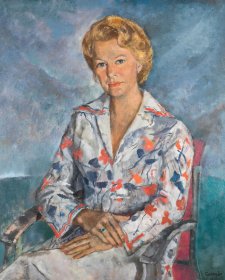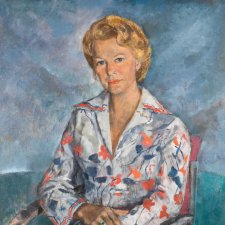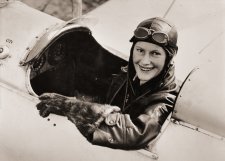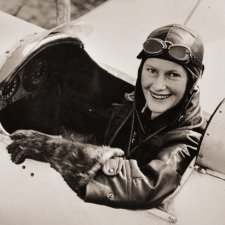Nancy Bird Walton AO OBE (1915–2009), aviatrix, decided she wanted to be a pilot when, at age eight, she saw a plane make an emergency landing on a beach near her home. At seventeen, she went to Sydney to have flying lessons with Charles Kingsford Smith, paying for her helmet, leathers and goggles with the money she'd saved from working in her father's general store in Kew, NSW. She obtained her commercial pilot's licence in 1935 and was hired as the pilot for the Far West Children's Health Scheme. Using a road map to navigate (there were no aviation maps available), she flew nurses and doctors to patients in remote areas. Bird Walton flew this aerial ambulance service – first in north-west New South Wales and later in Queensland – without giving a thought to the perils of her work: 'You learnt to fly an aeroplane and you went out and did a job,' she said. She won the Ladies' Trophy in the Brisbane to Adelaide Centenary Air Race in 1936, flying the fastest of all competitors on the Melbourne to Adelaide leg. In 1938, the Dutch airline, KLM, invited her to Europe for promotional work and to study the aviation industry. She met Englishman, Charles Walton, on her return journey home. They married in Sydney in 1939 in a ceremony conducted by John Flynn, whose innovations led to the forming of the Royal Flying Doctor Service. During the war, Bird Walton was a commandant in the Women's Air Training Corps; and in 1950 she founded the Australian Women Pilots' Association, which subsequently encouraged many to defy the notion that women were unsuited to careers in aviation. Her books include Born to Fly (1960) and her 1990 autobiography, My God, It's a woman!, which took its title from one cattle station owner's reaction to her diminutive, feminine frame emerging from the cockpit on landing on a remote airstrip. Bird Walton was patron and honorary life member of many aeronautical associations and enjoyed a successful career as a public speaker.
